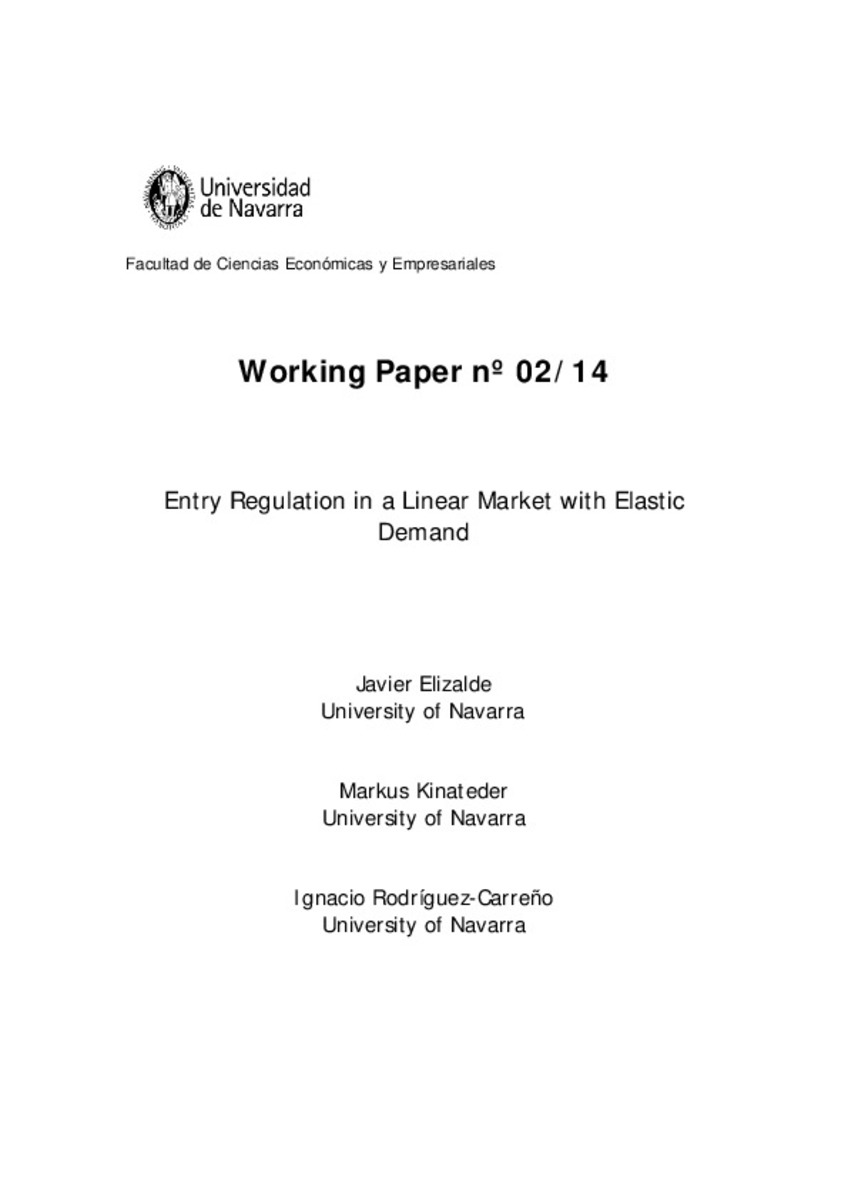Full metadata record
| DC Field | Value | Language |
|---|---|---|
| dc.creator | Elizalde, J. (Javier) | - |
| dc.creator | Kinateder, M. (Markus) | - |
| dc.creator | Rodríguez-Carreño, I. (Ignacio) | - |
| dc.date.accessioned | 2017-03-24T09:00:30Z | - |
| dc.date.available | 2017-03-24T09:00:30Z | - |
| dc.date.issued | 2014 | - |
| dc.identifier.citation | Elizalde, J. (Javier); Kinateder, M. (Markus); Rodríguez-Carreño, I. (Ignacio). "Entry Regulation in a Linear Market with Elastic Demand". En . , 2014, | es |
| dc.identifier.uri | https://hdl.handle.net/10171/43104 | - |
| dc.description.abstract | This work performs a comparative welf are analysis of two types of entry regulation in a duopolistic retail market: number of licenses and minimum distance between stores. In a linear (Hotelling) market we show that a minimum distance rule is beneficial for the consumers and disadvantageous for the firms when demand is sufficiently inelastic. The distance rule that maximises social welfare is one quarter of the mark et under which firms will be located at the quartiles. Those loca tions are also optimal under regulated prices. This analysis, which is not yet considered in the literature, is motivated by a change of entry regulat ion in the drugstore market in the Spanish region of Navarre. | es_ES |
| dc.language.iso | eng | es_ES |
| dc.rights | info:eu-repo/semantics/openAccess | es_ES |
| dc.subject | Materias Investigacion::Economía y Empresa | es_ES |
| dc.subject | Entry | es_ES |
| dc.subject | Regulation | es_ES |
| dc.subject | Hotelling | es_ES |
| dc.subject | De mand Estimation | es_ES |
| dc.subject | Welfare Analysis | es_ES |
| dc.title | Entry Regulation in a Linear Market with Elastic Demand | es_ES |
| dc.type | info:eu-repo/semantics/article | es_ES |
Files in This Item:
Statistics and impact
Items in Dadun are protected by copyright, with all rights reserved, unless otherwise indicated.






